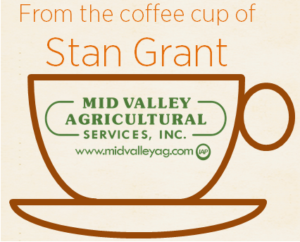 In the late 1980’s, as sales of varietal wines began to overtake those of blended wines, Chardonnay emerged from minor importance to displace Chenin blanc and Colombard as the major white wine variety in California. It has since proven to be adaptable to diverse growing environments and amenable to varied wine styles. Since its emergence, Chardonnay has been a driving force in the growth of California table wine sales and at this time, there are more acres of Chardonnay in the state than any other wine grape variety.
In the late 1980’s, as sales of varietal wines began to overtake those of blended wines, Chardonnay emerged from minor importance to displace Chenin blanc and Colombard as the major white wine variety in California. It has since proven to be adaptable to diverse growing environments and amenable to varied wine styles. Since its emergence, Chardonnay has been a driving force in the growth of California table wine sales and at this time, there are more acres of Chardonnay in the state than any other wine grape variety.
The Burgundy region of eastern France is the homeland of Chardonnay, where White Burgundy is the wine produced from it. Many consider it to be the finest white wine in the world due to its freshness, subtlety, and complex fruit flavors. Chardonnay is also the base of Chablis and it is an ingredient in most sparkling wines from Champagne. From its homeland, Chardonnay has spread to every significant wine producing region in the world.
The origins of Chardonnay are uncertain. DNA evidence indicates it is a hybrid between a member of the Pinot family of varieties and Gouais Blanc, a Croatian variety the Romans introduced to Burgundy.
Currently, there are 78 Chardonnay selections in the Foundation Plant Services (FPS) collection at Davis. Of these, only a few have been evaluated. Still, we know there is wide clonal variation among Chardonnay clones. These variations affect berry weight and number, cluster weight and number, yield, pruning weights, and fruit acidity, flavor, and aroma. Some Chardonnay clones produce fruit that has muscat sensory characteristics (e.g. Chardonnay 79, 80, 86, 102, 103, and 809). Chardonnay-04 and 05 are clones with a long history of high fruit yields and high grape quality in California. Other promising clones based on research and recent experiences include Chardonnay-17, 18, 20, 37, 48, and 548.
As may be inferred from its presence in northern European wine growing regions, Chardonnay is a relatively winter hardy variety. It is also early to break bud, which makes it vulnerable to spring frost damage. Among major wine grape varieties, Chardonnay flowers are often the first to bloom and its fruit is among the first to ripen. In warm grape growing areas, prompt harvesting when Chardonnay fruit is mature conserves acidity.
Chardonnay tends to be fruitful and its growth vigor moderate. As such, it can easily be overcropped, particularly when trained into quadrilateral cordons. To avoid overcropping and associated vine decline, design vineyards so that Chardonnay vines bear no more than about 8 feet of cordon (≈ 36 shoots per vine) under favorable environmental conditions and using an invigorating rootstock. With more challenging environments and lower vigor rootstocks, vines of this variety ought to carry proportionately less cordon. With Chardonnay, use trellises that include appropriate foliage support to accommodate draping shoots, to minimize shoot breakage during high winds, and to foster moderately dense fruit zones that promote fruit exposure to dappled sunlight.
Chardonnay leaves are uncommonly large and nearly entire (i.e. they have negligible lobing). Due to this trait, Chardonnay shoots have sufficient leaf area to ripen two clusters with only about 12 to 18 leaves (Fig. 1).
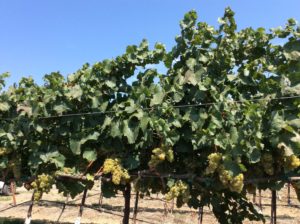
Fig. 1. A Chardonnay canopy on a Wye trellis during ripening.
Source: Progressive Viticulture, LLC ©
As a consequence, complete Chardonnay canopies often appear shorter than complete canopies of most other common varieties. Further, compared to highly lobed leaves, moving air is less effective in cooling Chardonnay leaves; making them more prone to heat related stresses and associated damage (Fig. 2).
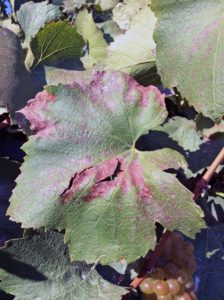
Fig. 2. A Chardonnay leaf damaged during high temperatures.
Source: Progressive Viticulture, LLC ©
Chardonnay has moderate susceptibility to canker diseases, but high susceptibility to Phomopsis cane and leaf spot disease. In many parts of the world, Chardonnay is considered highly susceptible to bunch rot, but in California bunch rot is usually a problem only where canopies are dense.
Perhaps Chardonnay’s greatest weakness is powdery mildew (Fig. 3). It is extremely susceptible. Accordingly, diligent, aggressive measures are necessary to control disease. Begin with dormant period sanitation measures to reduce inoculum, including berm sweeping, pruning shredding, and dormant sprays. Initiate protective foliar sprays as soon as there is sufficient tissue to serve as a target (3 to 5 inch shoots), always ensure complete foliage coverage, and never exceed the spray intervals stated on fungicide labels. In vineyards or sections of vineyards with a history of powdery mildew infection, use shorter spray intervals, especially when disease models indicate a high risk of disease. (Always rotate fungicide active ingredients in your spray schedule to avoid fungicide resistance developing in powdery mildew.) Further, create an unfavorable fruit zone environment for disease through careful pruning, shoot thinning, leaf removal, and other measures that promote aeration and complete spray coverage. Powdery mildew is a juvenile tissue disease, so sprays are usually no longer necessary after the fruit has begun to ripen.
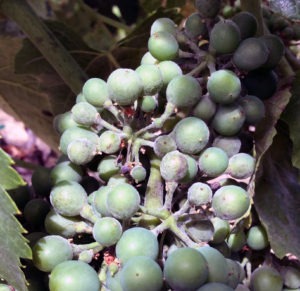
Fig. 3. A young cluster with a viable powdery mildew infection.
Source: Progressive Viticulture, LLC ©
Chardonnay appears somewhat prone to potassium deficiency following veraison. During this time, symptoms of potassium deficiency (a faded chlorosis) are common on exposed mid shoot leaves on the afternoon side of canopies (Fig. 4), but on vines carrying large crops, they sometimes develop on apical leaves.
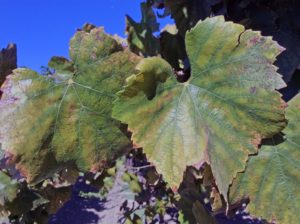
Fig. 4. Leaf symptoms of potassium deficiency in Chardonnay.
Source: Progressive Viticulture, LLC ©
Chardonnay is also prone to magnesium deficiency when growing on soils low in magnesium. On high magnesium soils, Chardonnay leaf tissues sometimes blacken during the ripening period (Fig. 5). The magnesium concentrations in these leaves are very high (> 1.00%), while at the same time, leaf potassium concentrations are low (≤ 0.4%) – presumably due to a negative interaction between magnesium and potassium.
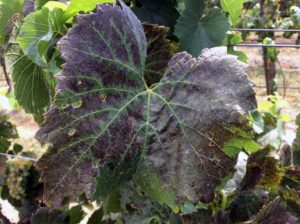
Fig. 5. Leaf symptoms of excessive magnesium in Chardonnay.
Source: Progressive Viticulture, LLC ©
To conclude, Chardonnay is an important component of the California wine industry. It is versatile variety and a consistent fruit producer when the clone, rootstock, and vineyard design are appropriate, and diseases and mineral nutrients are well managed.
Crush District 11 (Lodi) leads in the production of Chardonnay for California (USDA Grape Crush Report, 2016).
This article was originally published in the Mid Valley Agricultural Services October 2015 newsletter and was updated for this blog post.
Further Reading
Anderson, MM; Smith, RJ; Williams, MA; Wolpert, JA. Evaluation of French and California Chardonnay clones grown for production of sparkling wine. Am. J. Enol. Vitic. 59, 73-76. 2008
Bettiga, LJ. Comparison of Merlot and Chardonnay clones in Monterey County: a preliminary report. pp. 93-95. In Rantz, J (ed.) Proc. Int. Symp. Clonal Selection, Portland, OR. 20-21 Jun 1995. Amer. Soc. Enol. Vitic., Davis, Calif. 1995.
Bettiga, LJ. Chardonnay. In Christensen, LP, Dokoozlian, NK, Walker, MA, Wolpert (ed.). Wine grape varieties in California. University of California Agriculture and Natural Resources Publication 3419. 2003.
Coldwell, J. A concise guide to wine grape clones for professionals. John Caldwell Viticultural Service. Napa, California.
Fidelibus, MW, Christensen, LP, Katayama, DG, Verdenal, P-T. Yield components and fruit composition of six Chardonnay grapevine clones in the Central San Joaquin Valley, California. Am. J. Enol. Vitic. 57, 503-506. 2006.
Foundation Plant Material Services. http://fps.ucdavis.edu/fgrvarieties.cfm
Heald, E, Heald, R. Farming Chardonnay clones to the optimum. Practical Winery and Vineyard. March/April 1999. 31-35.
Robinson, J. Wines, grapes, and wines: the wine drinkers guide to grape varieties. Reed International Books, London, 1986.
Streshinsky, T. California wine. Lane Magazine and Book Company. Menlo Park, California. 1973.
Sullivan, CL. A companion for California wine. University of California Press, Berkeley. 1998.
Wolpert, JA, Kasimatis, AN, Weber, E. Field performance of six Chardonnay clones in the Napa Valley. Am. J. Enol. Vitic. 45, 393-400. 1994.
Wolpert, JA. Evaluation of winegrape clones in coastal California: current activities and future prospects. pp. 74-80. In Rantz, J (ed.) Proc. Int. Symp. Clonal Selection, Portland, OR. 20-21 Jun 1995. Amer. Soc. Enol. Vitic., Davis, Calif. 1995.
Have something interesting to say? Consider writing a guest blog article!
To subscribe to the Coffee Shop Blog, send an email to stephanie@lodiwine.com with the subject “blog subscribe.”
To join the Lodi Growers email list, send an email to stephanie@lodiwine.com with the subject “grower email subscribe” or click on “join our email list” to the right.
To receive Lodi Grower news and event promotions by mail, send your contact information to stephanie@lodiwine.com or call 209.367.4727.
For more information on the wines of Lodi, visit the Lodi Winegrape Commission’s consumer website, lodiwine.com.

